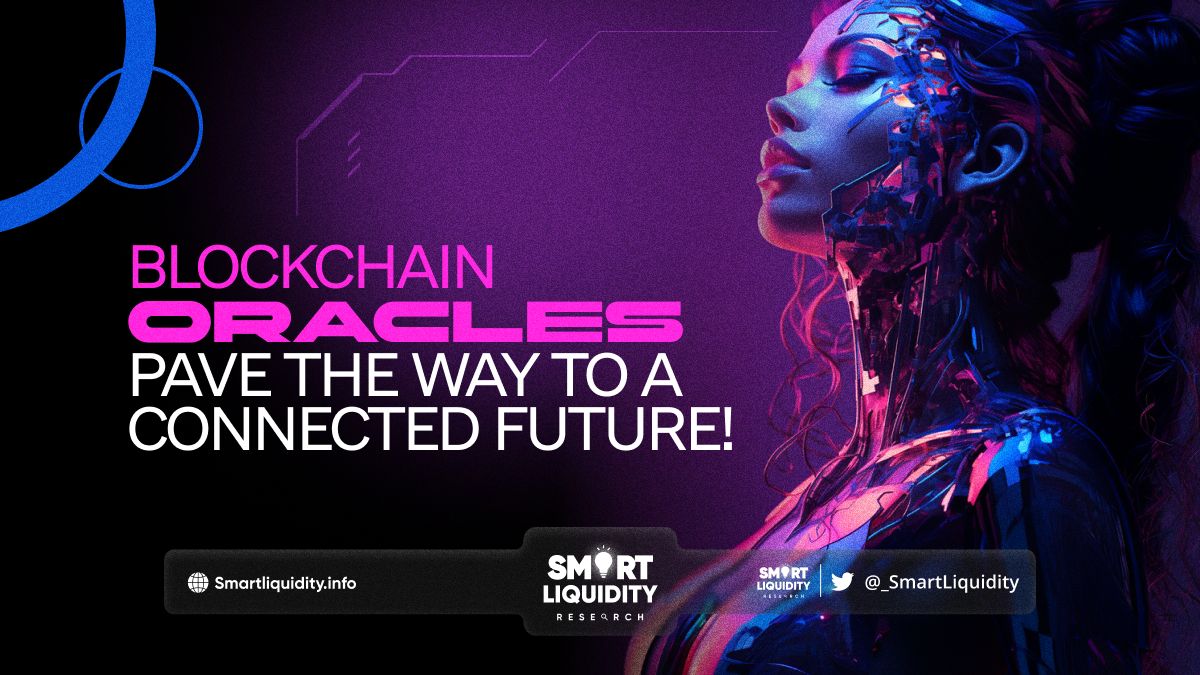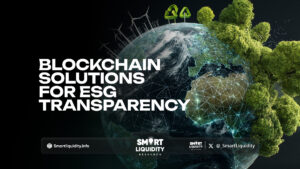Blockchain Oracles: The Key to Bridging the Gap Between the Real World and the Blockchain


Blockchain revolutionizes digital interactions, providing secure and transparent data storage. Yet, its decentralized nature limits access beyond its network. Blockchain oracles act as bridges, connecting blockchains to the real world.
Understanding the Oracle: Why Blockchain Needs External Data
Smart contracts are self-executing contracts that are stored on a blockchain. They can be used to automate a wide range of transactions, such as financial agreements, supply chain management, and even voting.
However, smart contracts cannot access data that exists outside of the blockchain. This is because blockchains are decentralized and do not have a central authority that can provide this data.
Oracles solve this problem by providing smart contracts with access to external data. This allows smart contracts to interact with the real world and execute complex agreements.
Decentralized vs. Centralized Oracles: Pros and Cons in the Blockchain
Decentralized oracles are powered by a network of nodes that provide data to smart contracts. The network of nodes is decentralized, meaning that no single entity controls it. This makes decentralized oracles more resistant to censorship and manipulation, as it would be very difficult for any single entity to control or manipulate the entire network.
Centralized oracles are controlled by a single entity, which provides data to smart contracts. This makes centralized oracles more susceptible to censorship and manipulation, as the central entity can control or manipulate the data that is provided to smart contracts.
| Feature | Decentralized Oracles | Centralized Oracles |
| Control | No single entity controls the network, making it more resistant to censorship and manipulation. | Controlled by a single entity, making it more susceptible to censorship and manipulation. |
| Security | More secure, as there is no single point of failure. | Less secure, as a single point of failure can be exploited. |
| Transparency | More transparent, as all transactions are publicly viewable. | Less transparent, as transactions may not be publicly viewable. |
| Scalability | More scalable, as the network can grow to accommodate more users. | Less scalable, as the network may be limited by the capacity of the central entity. |
| Cost | Lower cost, as there is no single entity to pay fees to. | Higher cost, as fees must be paid to the central entity. |
| Trust | Requires users to trust the network of nodes. | Requires users to trust the central entity. |
| Data Sources | Can aggregate data from multiple sources, making it more reliable. | Reliant on a single source of data, which may not be reliable. |
| Privacy | More private, as data can be anonymized or pseudonymized. | Less private, as data may be collected by the central entity. |
Table 1. Decentralized vs. Centralized Oracles: Pros and Cons in the Blockchain
Overall, decentralized oracles offer a number of advantages over centralized oracles, including security, transparency, and accuracy. However, they are also more complex and expensive to implement. Centralized oracles are less secure, transparent, and accurate, but they are also simpler and cheaper to implement.
The best type of oracle to use depends on the specific needs of the application. If security and accuracy are the top priorities, then a decentralized oracle is the best choice. If simplicity and cost are the top priorities, then a centralized oracle is the best choice.
Oracle Networks and Their Role in Securing Blockchain Data Feeds
Oracle networks are groups of independent nodes that provide data to smart contracts. These networks play a vital role in securing blockchain data feeds.
Oracle networks use a variety of mechanisms to secure their data feeds, such as:
Staking: Nodes are required to stake tokens in order to participate in the oracle network. This incentivizes nodes to provide accurate data.
Reputation systems: Nodes are rewarded for providing accurate data and penalized for providing inaccurate data. This helps to ensure that nodes are honest and reliable.
Multi-sig: Oracle networks often use multi-signature wallets to require multiple nodes to sign off on a data feed before it is submitted to a smart contract. This helps to prevent fraudulent or inaccurate data from being accepted.
Slashing: Oracle networks may also use slashing to penalize nodes that submit fraudulent or inaccurate data. This helps to incentivize nodes to provide accurate data.
Bonding: Oracle networks may also require nodes to bond tokens in order to participate in the network. This helps to deter malicious actors from joining the network.
The Oracle Economy: How Data Providers and Validators Drive the Ecosystem
The oracle economy is a rapidly growing ecosystem powered by data providers and validators. It is an essential component for the DeFi ecosystem, enabling smart contracts to access and utilize real-world data. Data providers collect and submit data from various sources, while validators verify the accuracy and authenticity of data submitted.
The oracle economy is a rapidly growing ecosystem powered by data providers and validators. It is an essential component for the DeFi ecosystem, enabling smart contracts to access and utilize real-world data. Data providers collect and submit data from various sources, while validators verify the accuracy and authenticity of data submitted.
The Future of Blockchain Oracles: Innovations and Trends in Bridging the Reality-Blockchain Gap
The future of blockchain oracles is bright. A number of innovative projects are working to develop new and improved oracle solutions.
Some of the key trends in the oracle space include:
Cross-chain oracles: Cross-chain oracles allow smart contracts on one blockchain to access data from other blockchains. This opens up a new world of possibilities for smart contracts.
AI-powered oracles: AI-powered oracles can provide real-time data feeds to smart contracts. This allows smart contracts to respond to real-world events more quickly and efficiently.
Hybrid oracles: Hybrid oracles combine the best of both decentralized and centralized oracles. They offer the security and transparency of decentralized oracles with the scalability and performance of centralized oracles.
Conclusion
Blockchain oracles are essential for bridging the gap between the real world and the blockchain. They allow smart contracts to interact with external data and systems, which opens up a new world of possibilities for smart contracts.
The oracle ecosystem is rapidly evolving, and a number of innovative projects are working to develop new and improved oracle solutions. The future of blockchain oracles is bright, and they are poised to play a major role in the adoption of blockchain technology.




